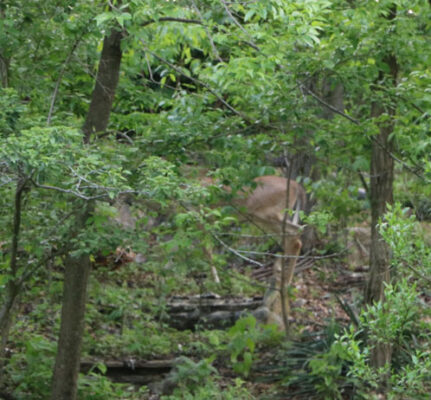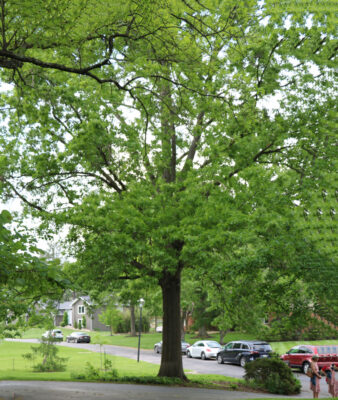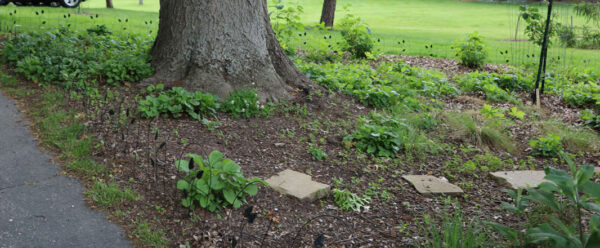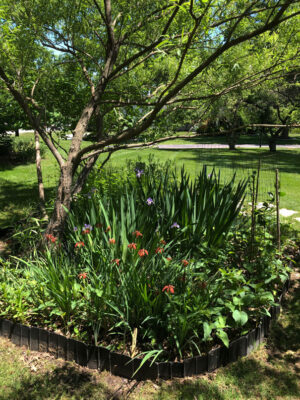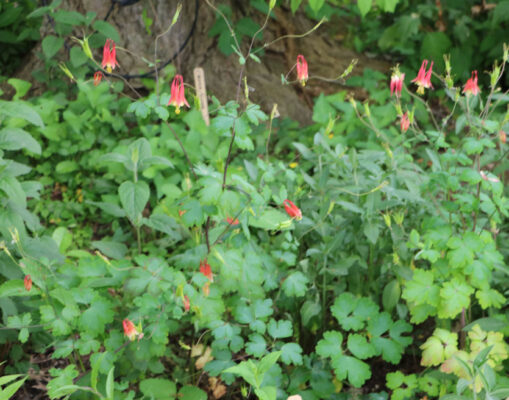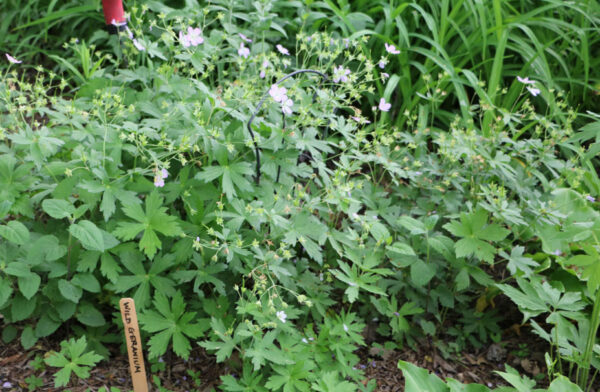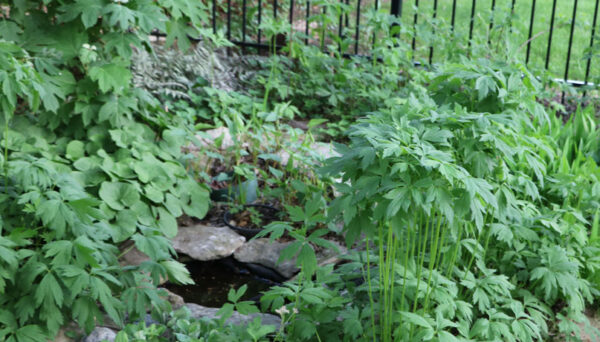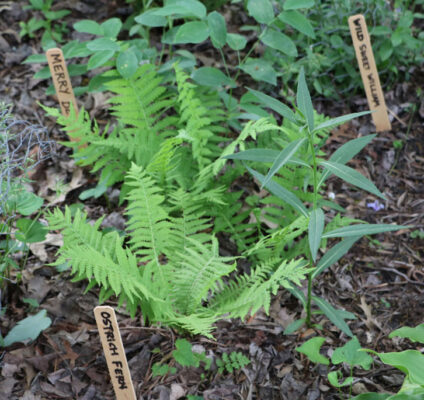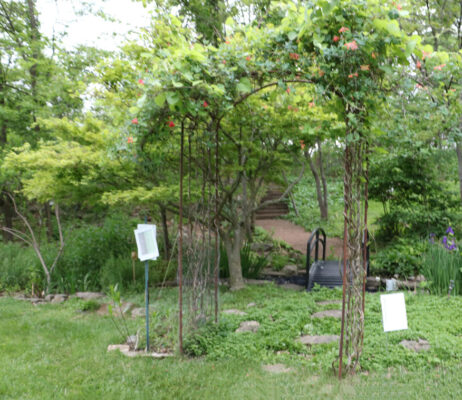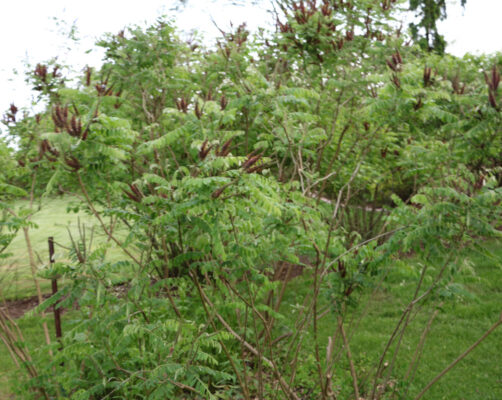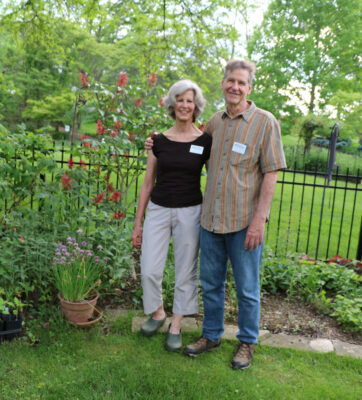 Wild Ones Gathering Highlights
Wild Ones Gathering Highlights
Home of Bob and Cathy Pickard
Wednesday, May 14th and Saturday May 17th
Bob and Cathy started their native gardening journey about ten years ago, after purchasing a garden evaluation at an auction. The evaluation was provided by Jane Schaefer, a member of Wild Ones, and Jane recommended Wild Ones as a great resource.
Bob and Cathy have a large yard, which borders on a golf course. Initially, their yard, along with most of their neighbors’, was characterized by turf grass and formal beds with non-native plants. Wanting to naturalize their yard, they suspended maintenance in some areas, only to find that bush honeysuckle thrived on neglect. They painstakingly removed the honeysuckle, which has been replaced by volunteer redbud (Cercis canadensis) , sweetgum (Liquidambar styraciflua), persimmon (Diospyros virginiana) and hackberry (Celtis occidentalis) trees, boneset (Eupatorium perfoliatum), common milkweed (Asclepias syriaca), pokeweed (Phytolacca americana), onion (Allium spp.) and other opportunistic plants. Early in their gardening project, they sought a Bring Conservation Home evaluation and received a Silver Certification. Garnering a higher certification will require removal of two large burning bushes, which Cathy has been reluctant to part with.
Their approach to native gardening has been to convert existing beds, keeping plants, even non-natives, that are thriving but adding only natives when they bring in new plants. Additionally, they have cut new beds and expanded old ones, filling them with more and more varieties of native plants, in order to create diversity and attract more pollinators, birds and other wildlife. They estimate that they have at least 150 species of native plants, shrubs and trees.
Their most frustrating problem is deer. Living on a golf course, it is not unusual for them to see the herd traipsing through the yard, opportunistically grazing on the tender leaves of newly emerging plants or rubbing their antlers on the bark of trees. Bob has erected fences around many of the beds and uses deer spray to deter the munching, but the deer are determined and plentiful, and success is limited.
Although the majority of their natives are in the back yard, there are several beds in the front, as well.
Inspired by Scott Woodbury’s article about “soft landings”, they removed the grass from under this large pin oak at the street and planted oak sedge (Carex albicans), roundleaf groundsel (Packera obovata), wild hydrangea (Hydrangea arborescens) and other shade-tolerant plants that they transplanted from other areas in the yard
On the south side of the house, they took advantage of a low, wet spot to create a bed filled with plants typically found in a rain garden, including a willow (Salix sp.), buttonbush (Cephalanthus occidentalis), rose mallow (Hibiscus lasiocarpos), rose turtlehead (Chelone obliqua), several varieties of iris, and others. Although the posted sign reads “rain garden”, they now know that this is not a rain garden!
In the back, they have beds that ring the patio.
One of several fenced-in collections, including golden alexanders (Zizia aurea), coral honeysuckle (Lonicera sempervirens), blue false indigo (Baptisia australis) and Ohio spiderwort (Tradescantia ohiensis).
Three small ponds are spanned by a bridge. As you pass under the arbor, covered by blooming coral honeysuckle (Lonicera sempervirens), you can ascend a concrete stairway that cuts through the wilder parts of the property and ends close to Tee #3 of the Meadowbrook Country Club golf course.
One of the fenced in beds includes blue false indigo (Baptisia australis), downy phlox (Phlox pilosa), purple poppy mallow (Callirhoe involucrata) and rose verbena (Glandularia canadensis).
– Article by Cathy Pickard
Thanks to Bob & Cathy for sharing their garden with us!

